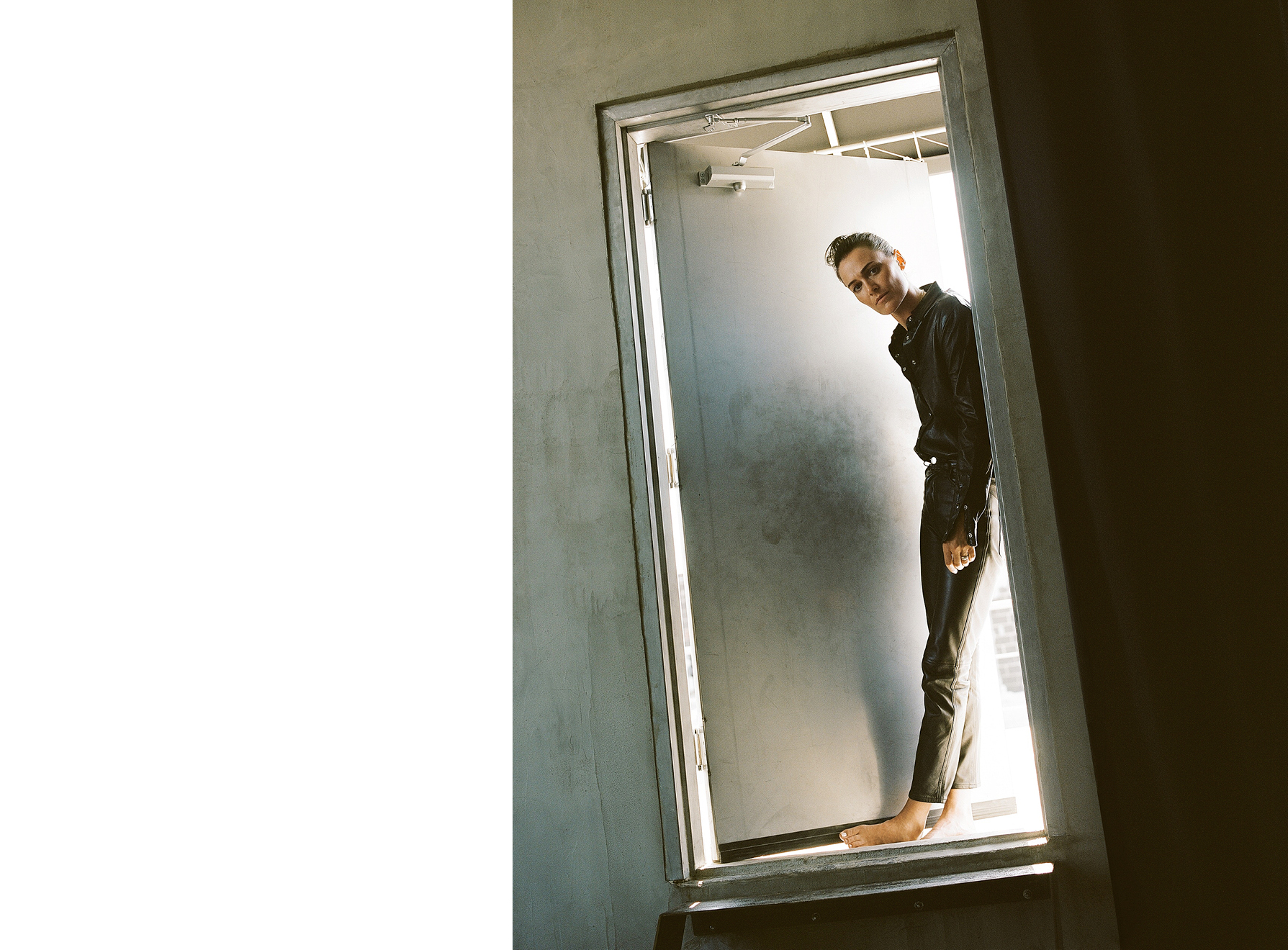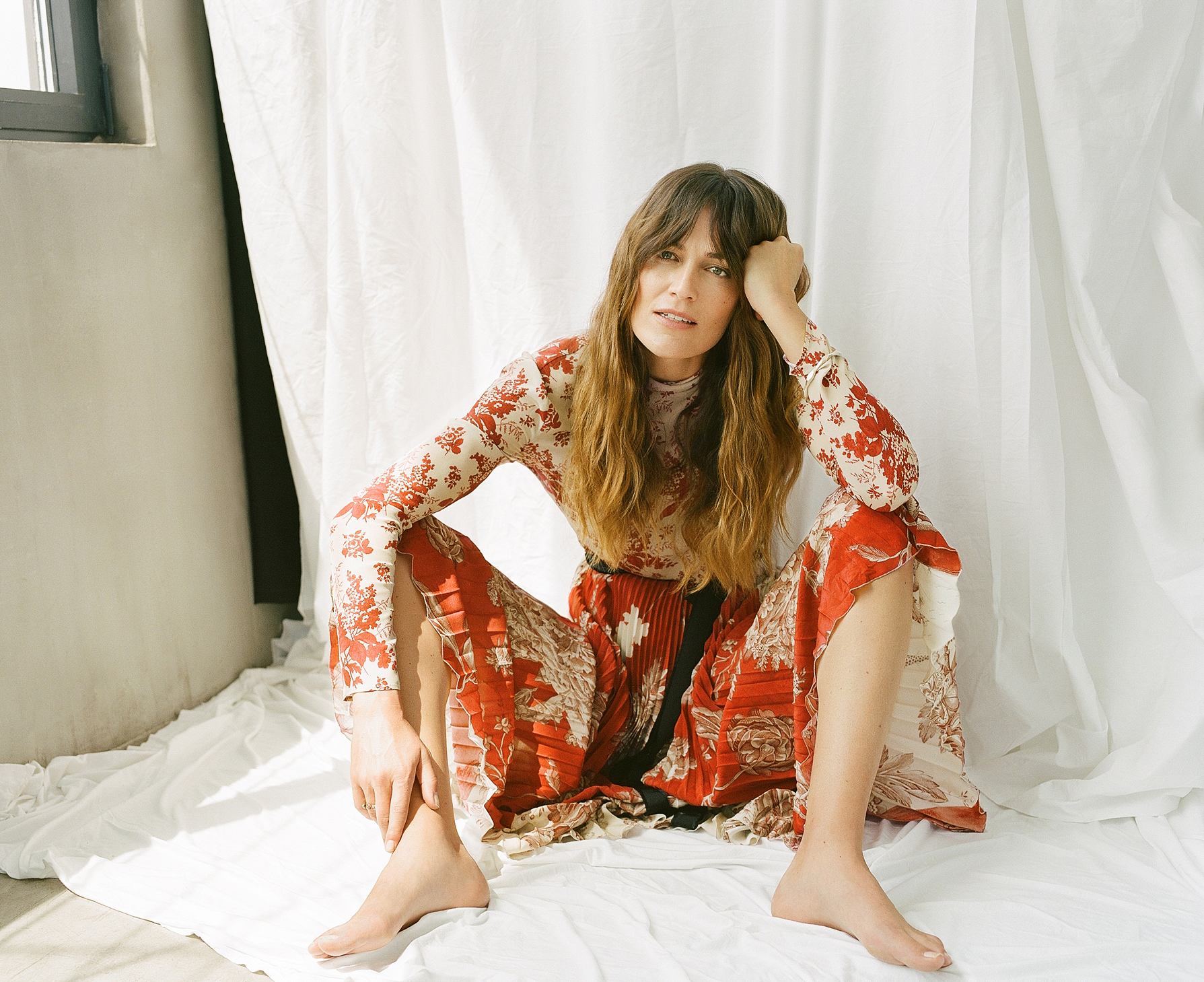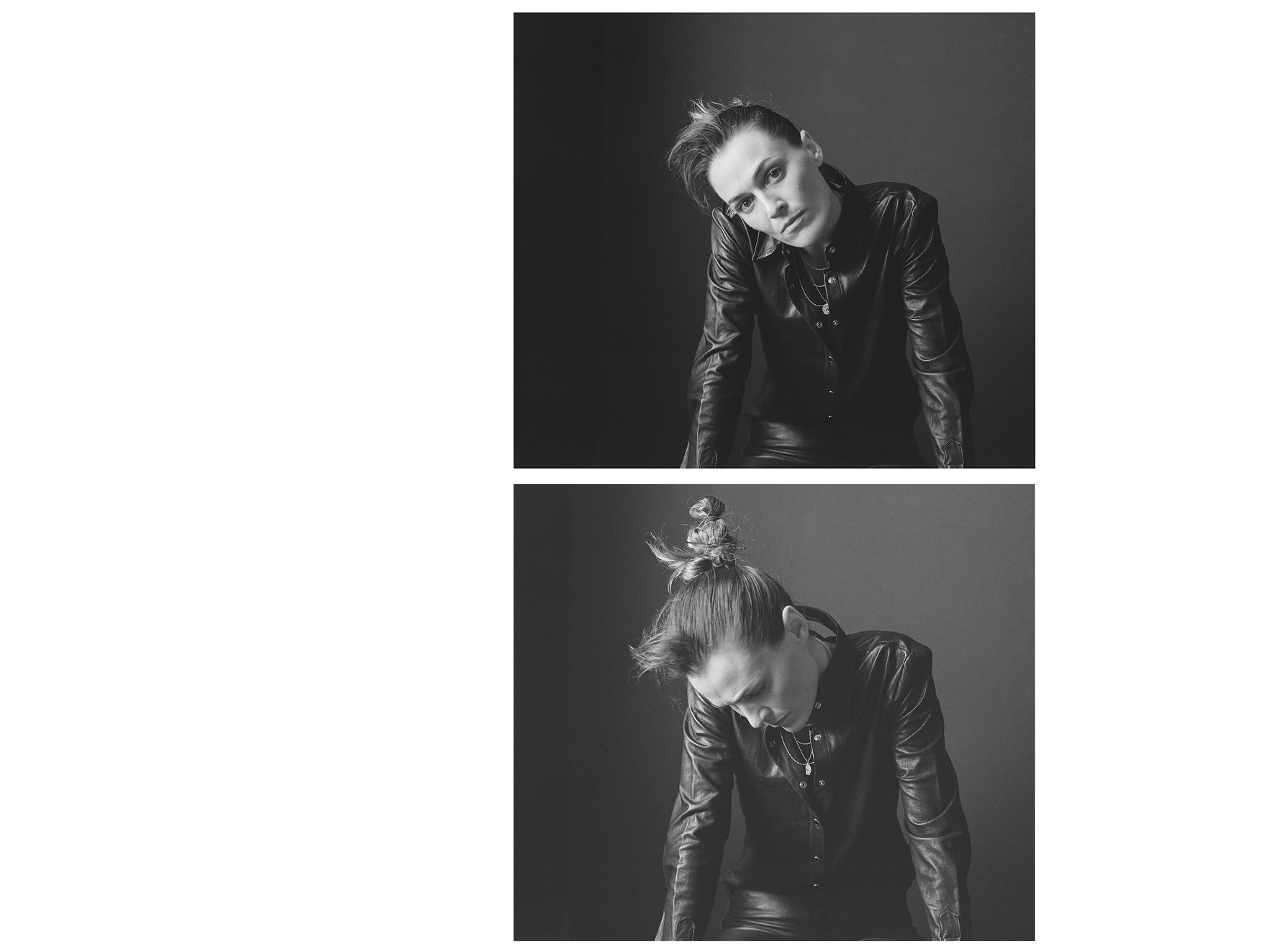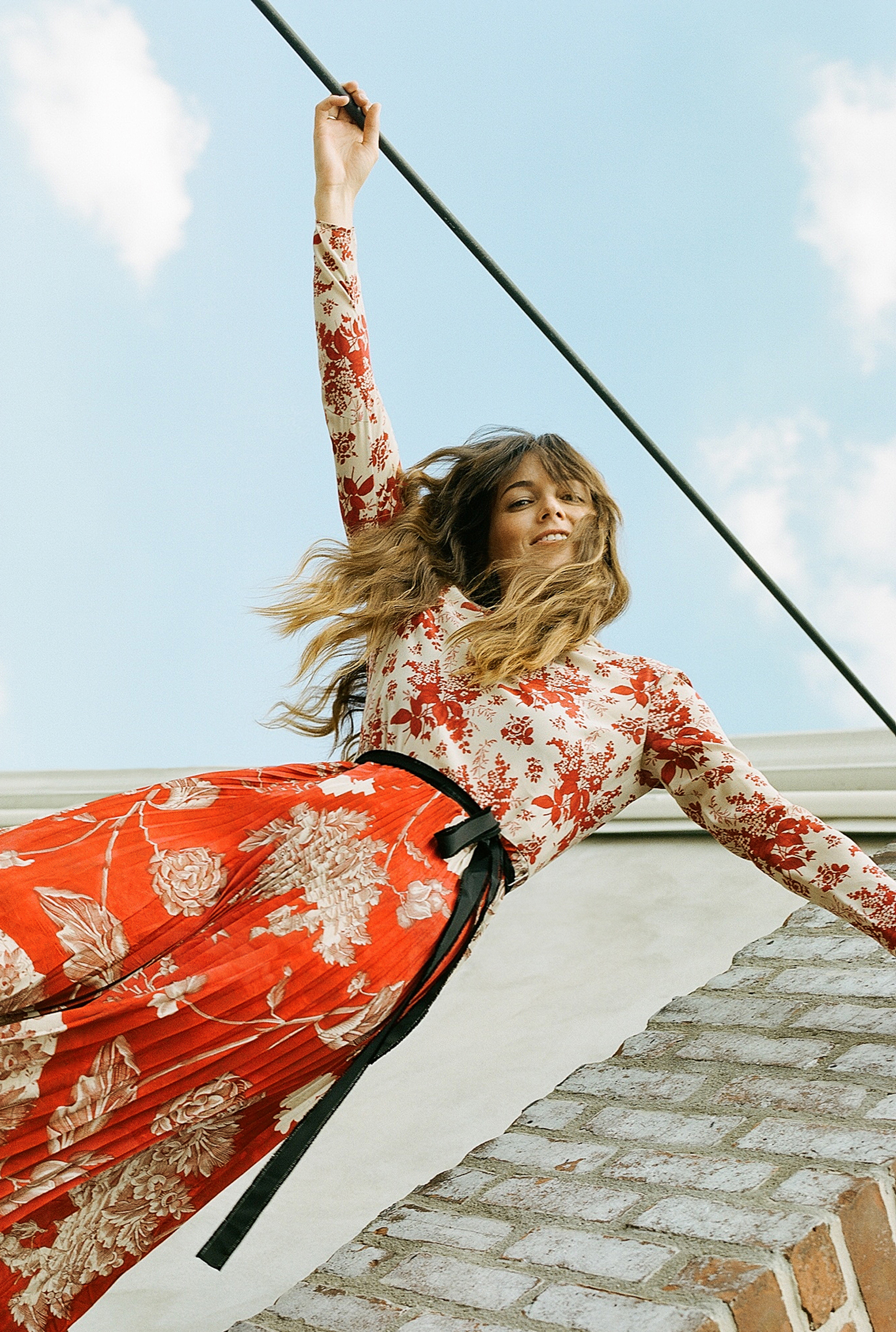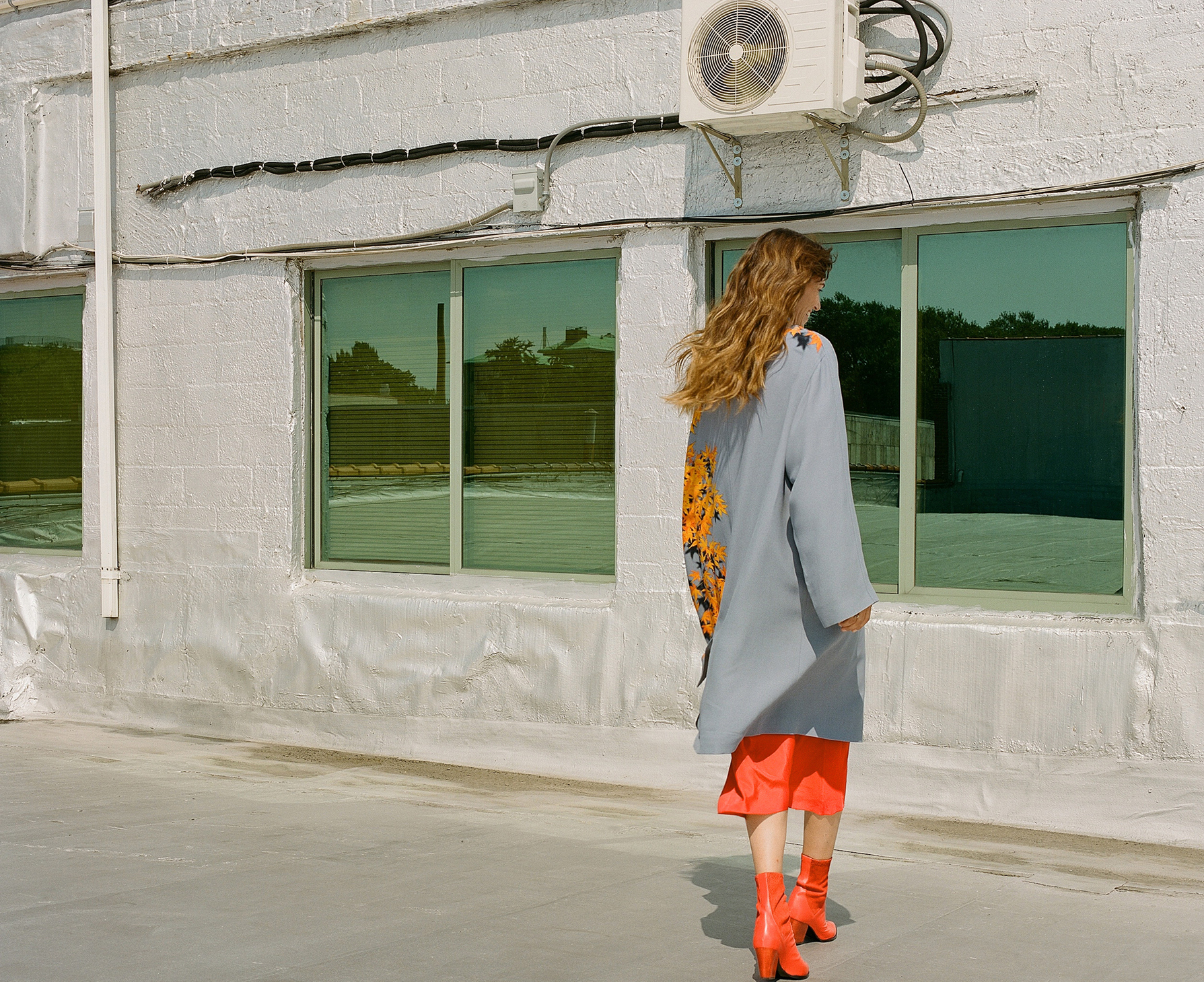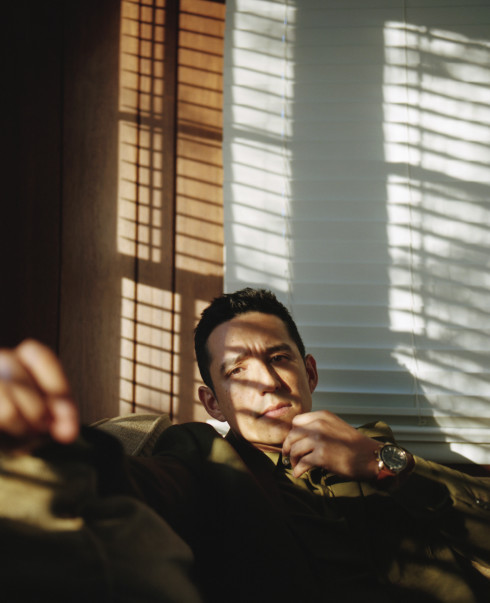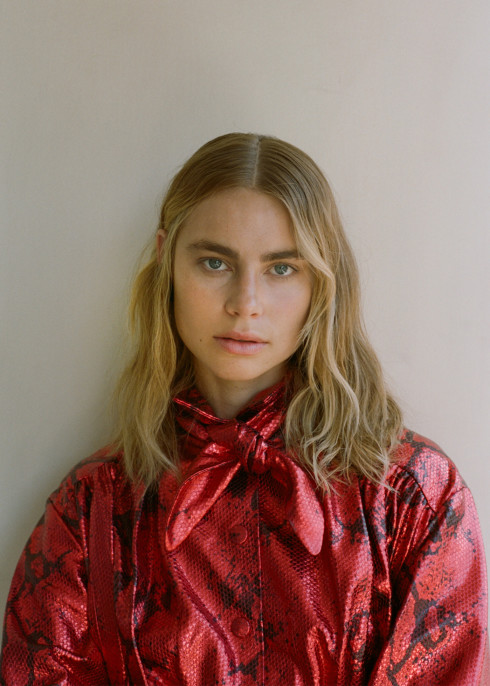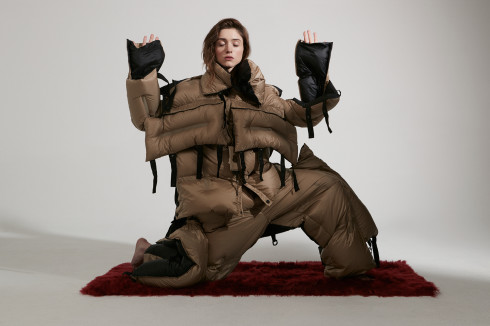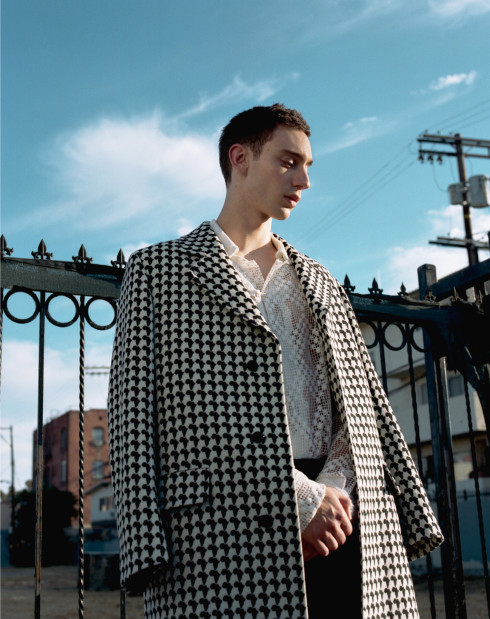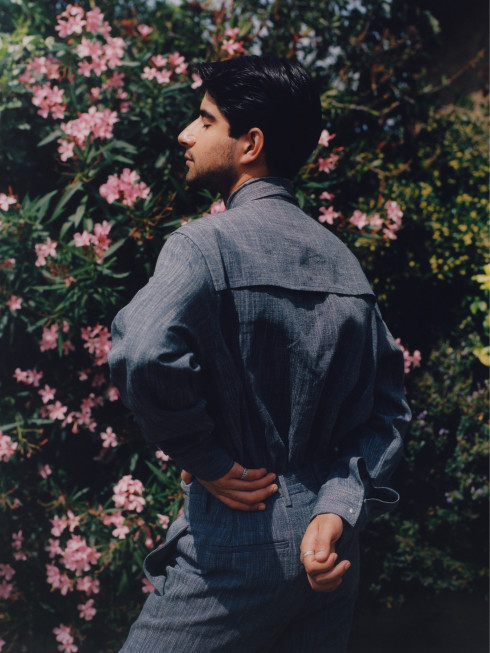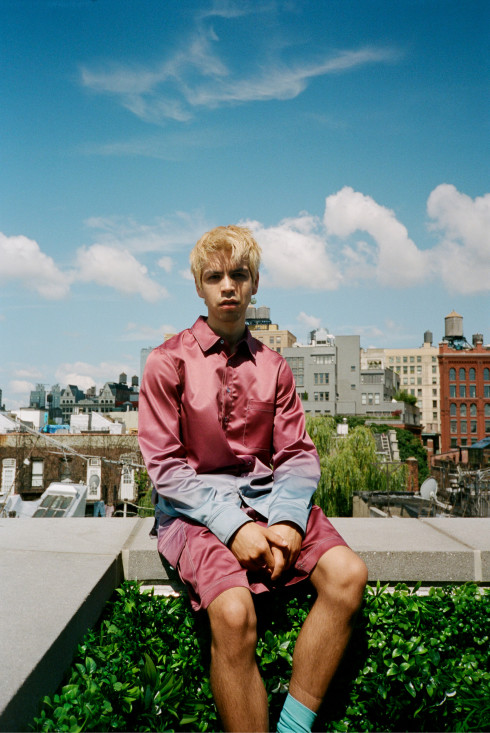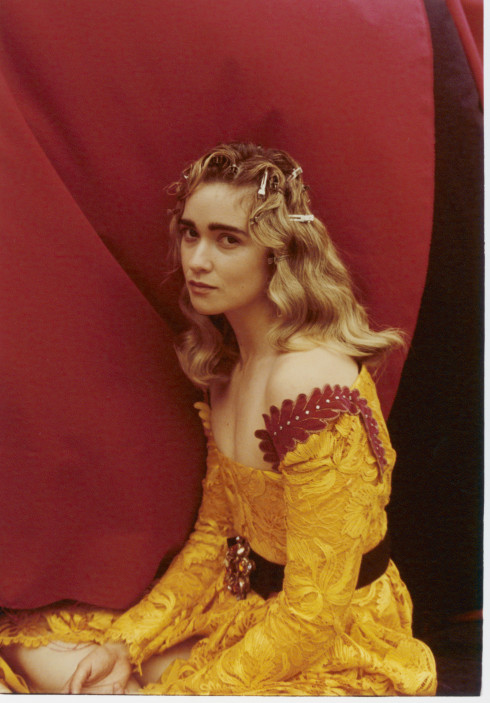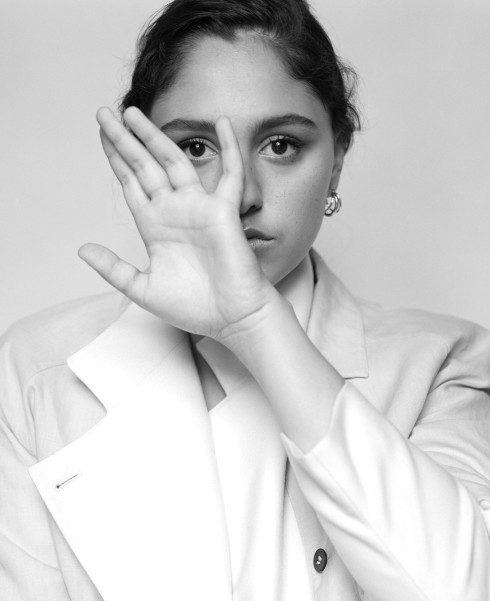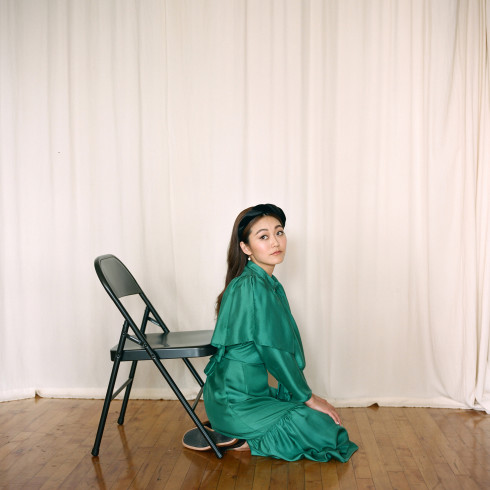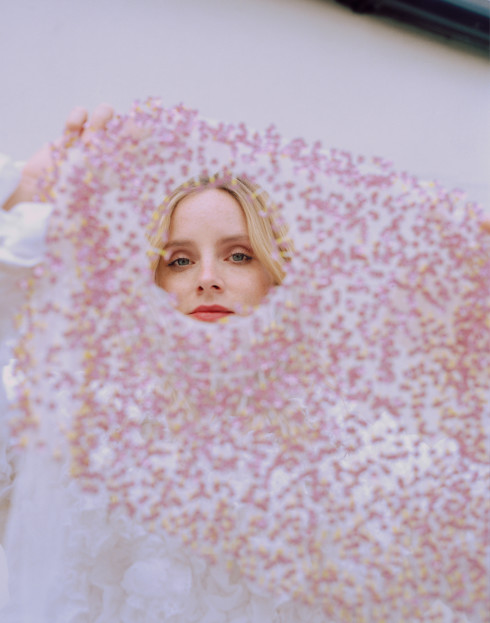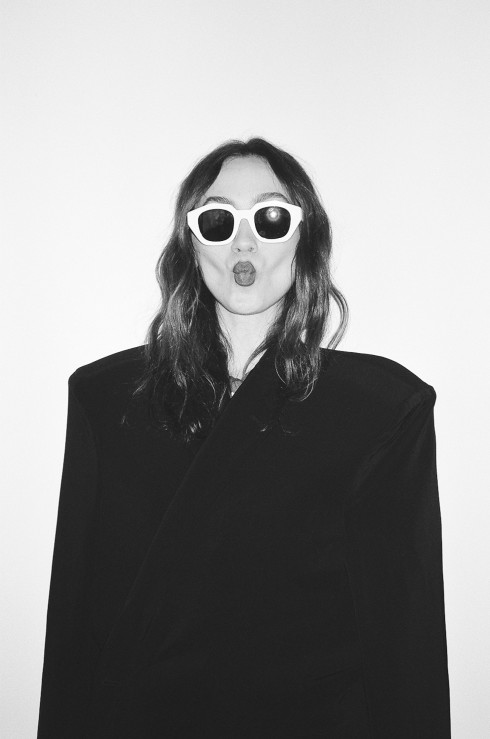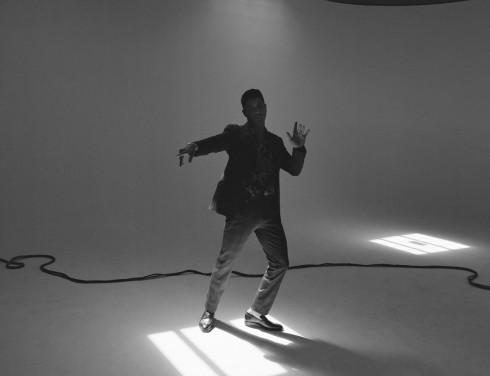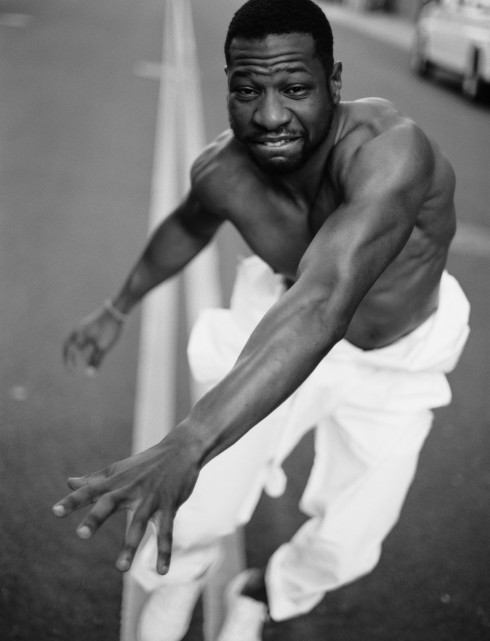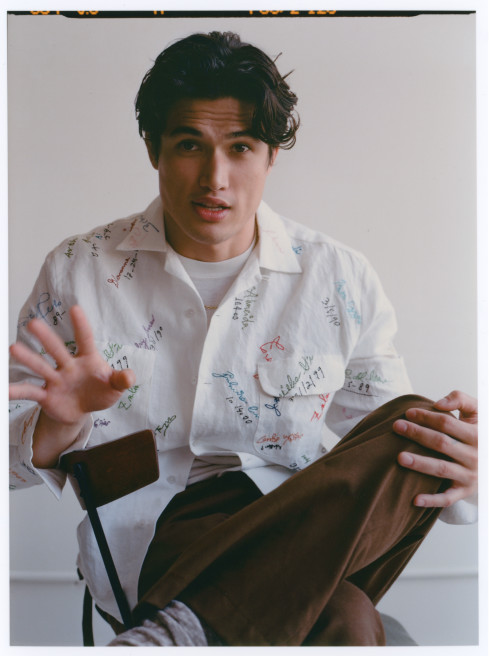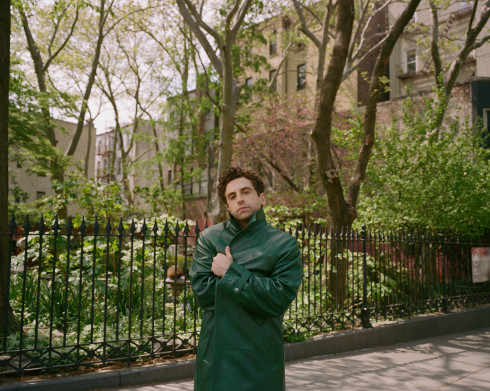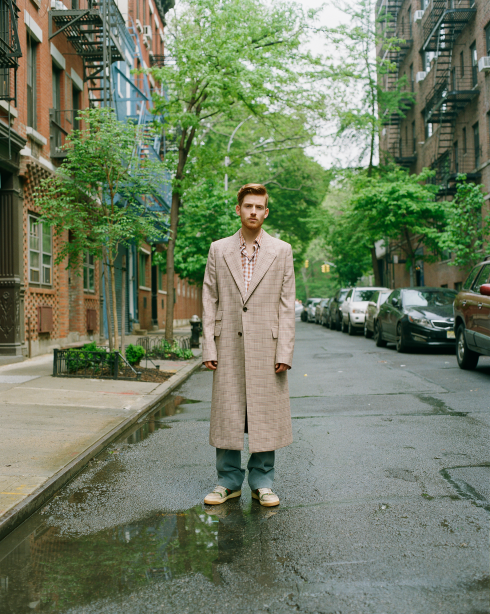
All clothing by Missoni. Shoes by Christian Louboutin. Rings by Pamela Love.
- By
- Cooper Halpern
- Photography by
- Whitney Hayes
- Styling by
- Julie Brooke Williams
Hair by Nate Rosenkranz at Honey Artists. Makeup by Min Min Ma.
Lauren Glazier Sets Herself Apart
As the bartender Kay Manz in the second season of Mindhunter, David Fincher’s psychological deep dive into some of America’s most infamous serial killers, Lauren Glazier takes on her meatiest role to date. In the new episodes, the toxic ideologies driving the murderers begin to infect the investigators and then those in closest proximity to them, leading the romantic relationship between Kay and Wendy Carr (Anna Torv), a psychology professor in the FBI’s Behavioral Science Unit, to turn increasingly sour. Wendy’s all-consuming work causes psychological attrition and she proves unable to compartmentalize and control all the aspects of her life as her professional realm increasingly poisons her personal one, which Kay takes the brunt of. In her performance, Glazier digs deep into the challenges Kay faces with maintaining that separation, obstacles she admits she also encounters in her own experience.
Actors, like the FBI agents and criminally insane of Mindhunter, have to confront the question of how much to allow their private lives to overlap with their professional ones. The artifice, as in any professional setting, required to progress in the entertainment industry can seem antithetical to the presence of mind needed to create a performance that feels real. However, Glazier attempts to find equilibrium between those competing forces by acknowledging any situation for what it is and modifying her behavior accordingly, without obscuring where she finds herself psychically at that moment. On Mindhunter, Wendy and Kay perform a similar act of distancing. To maintain the status quo of their personal and professional lives, they each compartmentalize, keeping parts of themselves from each other and their relationship from the rest of the world.
Despite Fincher’s infamous habit of wearing down actors with scores of takes for a single shot, Glazier found herself invigorated by her participation in his intense method. “I think the takes thing with him has almost become this whole other thing,” she explains. “It doesn’t feel like that when you’re doing the work; it feels like you understand he’s looking for something very specific.” She says Fincher’s confidence in the execution of his vision radiated throughout the set, inspiring the best from the cast and crew. She felt creatively emboldened: “He loves questions and comments and he loves your ideas and you feel very safe expressing yourself as an actor.” She even goes as far as to say, “[Fincher] loves actors.” If Fincher, as Jake Gyllenhaal once said, paints with actors, Glazier thrived on allowing him to use her performance as one of the colors on his palette.
The show, like some of Fincher’s past serial-killer-themed feature-length projects (Zodiac and Se7en), employs laconic dialogue to focus on a darkly unsettling visual æsthetic. The pared-down writing combined with the camera’s focus on the physical spaces between characters draws the viewer’s attention to the often unspoken tension of the scene. This stress often comes from the characters’ attempts to squeeze themselves into societally acceptable molds, but like a round peg in a square hole, the harder they push, the harder it is to fit in. Mindhunter often blurs the line between cop and criminal visually by beginning scenes with extreme close-ups of a body part or an item, leaving the viewer guessing as to exactly who is doing the action being depicted. Several scenes begin with a close-up of hands in the trunk of a car, equally suggestive of a killer’s kill kit or one of the FBI agents’ tools. In Mindhunter, good guys, bad guys, and those in proximity to them (like Glazier’s Kay) are all faced with the pressure of fitting in and the show explores the ways that these people distinguish aspects of their personalities to ameliorate the relationships between themselves and their peer groups.
Though her suburban Canadian roots (she was born and raised in Kelowna, British Columbia) may have initially steered her away from an acting career, Glazier’s background provided the foundation for her present-day ability to find inner peace throughout the industry’s volatility. In her adolescence, she always enjoyed films and television, spending Friday evenings with her family with a Blockbuster movie night and Saturdays with NBC, but she never pictured herself onscreen. Growing up distantly removed from the Hollywood industrial complex, Glazier initially did not consider acting as a viable career. However, through high school theater productions, she found her vocation, eventually settling in Los Angeles to chase her dream full time.
Glazier ended up discovering some of the challenges inextricable from life in show business. Failure is an essential part of the life of any actor seeking a new role—you either get the part or you don’t, most often not. She admits that every role that she auditions for where she thinks to herself, “I’m so good for this,” she knows there must be another actress behind her thinking the exact same thing. Even when she does land a job, it is unlikely she has complete creative control of the way her performance is portrayed, as her work is molded and shaped by many other hands before it ends up onscreen. In explaining how she feels about having to relinquish control of the products of her artistry, Glazier displays a practiced mindfulness about the industry. “I think what I’ve learned is it’s part of the gig,” she says. “You’ve got to just do it and then forget about it until it comes back around, if and when it does.”
Despite acknowledging the frustrations of life as an actor, Glazier’s zen is supported by her ability to take ownership of her creations in other parts of her life. In addition to acting, she has continued her suburban hobbies into adulthood, finding peace in the small, repetitive labors of yard work like gardening and woodwork in contrast to acting, “because at the end of the day you see a finished product,” allowing herself to take pleasure in this tactile achievement, exclaiming, “I accomplished this!” She is also able to acquire this feeling of accomplishment in other creative pastimes including charcoal drawings and her most recent undertaking, learning to play the guitar. Sharing the hands-on nature of her other pursuits, she can notice tangible improvements in her drawing and strumming, a process she finds ultimately rewarding. With a toolbox of skills she can infinitely build upon, she will always have sources of personal fulfillment separate from wherever she finds herself in her acting career.
Nonetheless, she hopes her role as Kay Manz in Mindhunter can be a building block for things to come. (She can also currently be seen as Nyrie in the new Apple TV+ science fiction program See, a dystopian thriller starring Jason Momoa in which humanity has gone blind, which premiered earlier this month.) Glazier expresses pride for her work on Mindhunter as well as the show as a whole and seems legitimately thrilled to be a part of something with such universal acclaim, as it is, in her words, “such a rad show.” Supported by her extraprofessional creative endeavors, she knows how to take things as they come, but she remains ready for the next “rad” project on the road ahead.
Mindhunter is now streaming on Netflix. See is now streaming on Apple TV+.
- By
- Cooper Halpern
- Photography by
- Whitney Hayes
- Styling by
- Julie Brooke Williams
Hair by Nate Rosenkranz at Honey Artists. Makeup by Min Min Ma.
